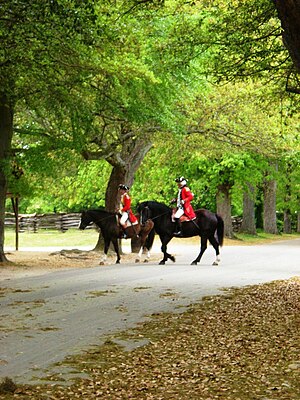| American Legion | |
|---|---|
 American Legion reenactors at Colonial Williamsburg | |
| Active | 1780–1783 |
| Disbanded | 24 October 1783 |
| Country | |
| Allegiance | New York |
| Branch | British Army |
| Type | Provincial Troops |
| Role | Cavalry and infantry |
| Size | Corps (regiment) |
| Part of | British American Forces |
| Facings | Green |
| Engagements | American War of Independence |
| Commanders | |
| Commanding Officer | Brigadier General Benedict Arnold |
The American Legion was a provincial cavalry and infantry corps (regiment) of the British Army in the American War of Independence commanded by Brigadier General Benedict Arnold.